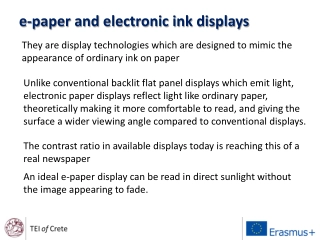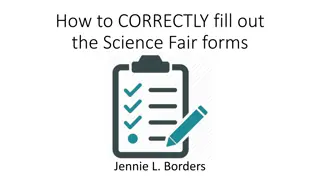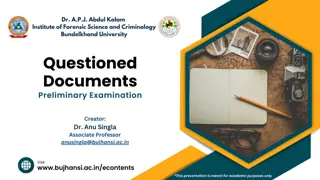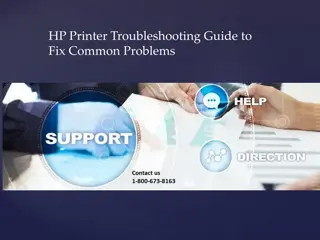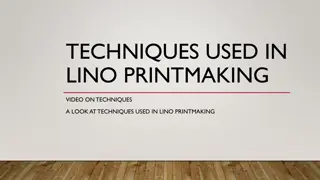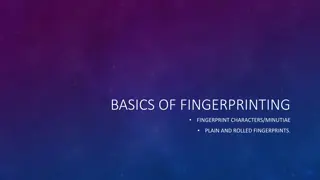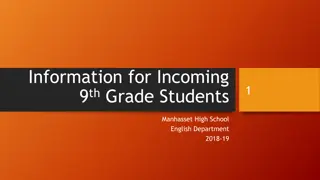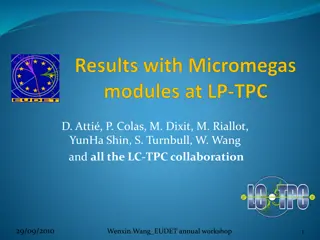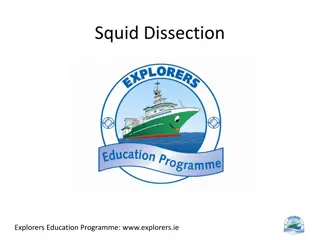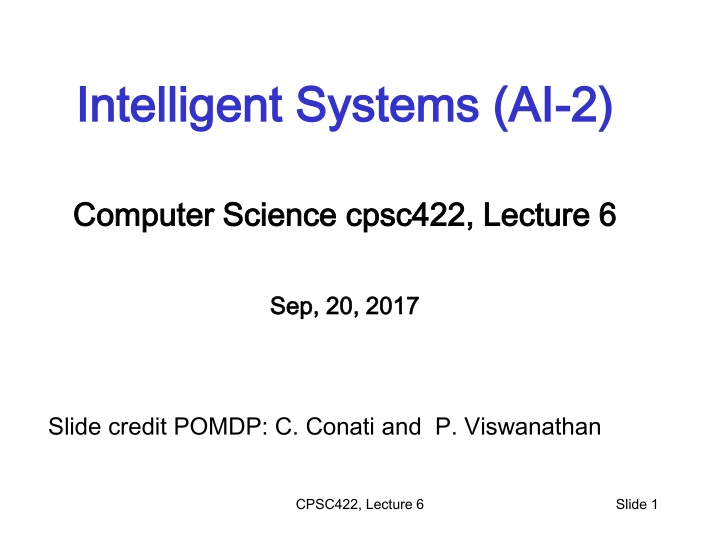
Partially Observable Markov Decision Processes (POMDPs)
Explore the concept of Belief State Update Policies and Optimal Policy in Partially Observable Markov Decision Processes (POMDPs). Learn about Markov Models, Hidden Markov Models, and how to update belief states with examples. Dive deeper into the world of intelligent systems and AI in computer science.
Download Presentation

Please find below an Image/Link to download the presentation.
The content on the website is provided AS IS for your information and personal use only. It may not be sold, licensed, or shared on other websites without obtaining consent from the author. If you encounter any issues during the download, it is possible that the publisher has removed the file from their server.
You are allowed to download the files provided on this website for personal or commercial use, subject to the condition that they are used lawfully. All files are the property of their respective owners.
The content on the website is provided AS IS for your information and personal use only. It may not be sold, licensed, or shared on other websites without obtaining consent from the author.
E N D
Presentation Transcript
Intelligent Systems (AI Intelligent Systems (AI- -2) 2) Computer Science Computer Science cpsc422 cpsc422, Lecture , Lecture 6 6 Sep, 20, 2017 Sep, 20, 2017 Slide credit POMDP: C. Conati and P. Viswanathan CPSC422, Lecture 6 Slide 1
Lecture Overview Lecture Overview Partially Observable Markov Decision Processes Summary Belief State Belief State Update Policies and Optimal Policy CPSC422, Lecture 6 2
Markov Models Markov Models Markov Chains Hidden Markov Model Partially Observable Markov Decision Processes (POMDPs) Markov Decision Processes (MDPs) CPSC422, Lecture 6 Slide 3
Belief State Belief State and its Update and its Update (s ) b = ( ' ) ' ( | ) ' ( | ' , ) ( ) b s P e s P s s a b s s as = b' Forward(b ,a,e) To summarize: when the agent performs action a in belief state b, and then receives observation e, filtering gives a unique new probability distribution over state deterministic transition from one belief state to another CPSC422, Lecture 6 4
Belief Update: Example1 Belief Update: Example1 Let s introduce a sensor that perceives the number of adjacent walls in a location with a 0.1 probability of error P(2w|s) = 0.9 ; P(1w|s) = 0.1 if s is non-terminal and not in third column P(1w|s) = 0.9 ; P(2w|s) = 0.1 if s is non-terminal and in third column Try to compute the new belief state if agent moves leftand then perceives 1 adjacent wall s = ( ' b ) ' s ( | ) ' s ( | ' s , ) ( ) P e P a s b s ) 1 , 2 ( b = + + ) 1 , 1 ( ' b 1 , 1 ( | ) 1 , 1 (( ), ) ) 1 , 1 ( b 2 , 1 ( | ) 1 , 1 (( ), ) ) 2 , 1 ( b 1 , 2 ( | ) 1 , 1 (( ), ) X P left P left P left X should be equal to ? B. B. 0.2 A. A. 0.1 C. C. 0.9 CPSC422, Lecture 5 5
Belief Update: Example 2 Belief Update: Example 2 Let s introduce a sensor that perceives the number of adjacent walls in a location with a 0.1 probability of error P(2w|s) = 0.9 ; P(1w|s) = 0.1 if s is non-terminal and not in third column P(1w|s) = 0.9 ; P(2w|s) = 0.1 if s is non-terminal and in third column Try to compute the new belief state if agent moves rightand then perceives 2 adjacent wall s = ( ' b ) ' s ( | ) ' s ( | ' s , ) ( ) P e P a s b s = right ) 2 , 1 ( ' b 2 ( P 2 , 1 ( | w )) + 1 , 1 ( | ) 2 , 1 (( ), ) ) 1 , 1 ( b P + 2 , 1 ( | ) 2 , 1 (( ), ) ) 2 , 1 ( b P right 3 , 1 ( | ) 2 , 1 (( ), ) ) 3 , 1 ( b P right CPSC422, Lecture 6 6
Optimal Policies in POMDs ? Optimal Policies in POMDs ? Theorem (Astrom, 1965): The optimal policy in a POMDP is a function *(b) where b is the belief state (probability distribution over states) That is, *(b) is a function from belief states (probability distributions) to actions It does not depend on the actual state the agent is in Good, because the agent does not know that, all it knows are its beliefs! Decision Cycle for a POMDP agent Given current belief state b, execute a = *(b) Receive observation e compute s = : ( ' b ) ' s ( | ) ' s ( | ' s , ) ( ) P e P s a b s 7 Repeat CPSC422, Lecture 6
How to Find an Optimal Policy? How to Find an Optimal Policy? ? ? Turn a POMDP into a corresponding MDP and then solve that MDP Generalize VI to work on POMDPs Develop Approx. Methods Point-Based VI Look Ahead CPSC422, Lecture 6 8
Finding the Optimal Policy: State of the Art Turn a POMDP into a corresponding MDP and then apply VI: only small models Generalize VI to work on POMDPs 10 states in1998 200,000 states in 2008-09 Develop Approx. Methods 2009 - now Point-Based VI and Look Ahead Even 50,000,000 states http://www.cs.uwaterloo.ca/~ppoupart/software.html CPSC422, Lecture 6 9
Recent Method: Point- based Value Iteration (not required) Find a solution for a sub-set of all states Not all states are necessarily reachable Generalize the solution to all states Methods include: PERSEUS, PBVI, and HSVI and other similar approaches (FSVI, PEGASUS) CPSC422, Lecture 6 10
Dynamic Decision Networks (DDN) Comprehensive approach to agent design in partially observable, stochastic environments Basic elements of the approach Transition and observation models are represented via a Dynamic Bayesian Network (DBN). The network is extended with decision and utility nodes, as done in decision networks At At-2 At+2 At-1 At+1 Rt Rt-1 Et-1 Et CPSC422, Lecture 6 11
Dynamic Decision Networks (DDN) A filtering algorithm is used to incorporate each new percept and the action to update the belief state Xt Decisions are made by projecting forward possible action sequences and choosing the best one: look ahead search At At-2 At+2 At-1 At+1 Rt Rt-1 Et-1 Et CPSC422, Lecture 6 12
Dynamic Decision Networks (DDN) At At-2 At+2 At-1 At+1 At+1 Filtering / Belief Update Projection (3-step look-ahead here) Nodes in yellow are known (evidence collected, decisions made, local rewards) Agent needs to make a decision at time t (Atnode) Network unrolled into the future for 3 steps Node Ut+3 represents the utility (or expected optimal reward V*) in state Xt+3 i.e., the reward in that state and all subsequent rewards Available only in approximate form (from another approx. method) CPSC422, Lecture 6 13
Look Ahead Search for Optimal Policy General Idea: Expand the decision process for n steps into the future, that is Try all actions at every decision point Assume receiving all possible observations at observation points Result: tree of depth 2n+1where every branch represents one of the possible sequences of n actions and n observations available to the agent, and the corresponding belief states The leaf at the end of each branch corresponds to the belief state reachable via that sequence of actions and observations use filtering/belief-update to compute it Back Up the utility values of the leaf nodes along their corresponding branches, combining it with the rewards along that path Pick the branch with the highest expected value CPSC422, Lecture 6 14
Look Ahead Search for Optimal Policy Decision At in P(Xt|E1:tA1:t-1 ) These are chance nodes, describing the probability of each observation akt a1t a2t Observation Et+1 e1t+1 e2t+1 ekt+k At+1 in P(Xt+1|E1:t+1 A1:t) Belief states are computed via any filtering algorithm, given the sequence of actions and observations up to that point |Et+2 At+2 in P(Xt+1|E1:t+2A1:t+1) To back up the utilities take average at chance points Take max at decision points |Et+3 P(Xt+3|E1:t+3 A1:t+2) 15 |U(Xt+3) CPSC422, Lecture 6
Best action at time t? B. a2 A. a1 C. indifferent CPSC422, Lecture 6 16
Look Ahead Search for Optimal Policy What is the time complexity for exhaustive search at depth d, with |A| available actions and |E| possible observations? A. O(d *|A| * |E|) B. O(|A|d * |E|d) C. O(|A|d * |E|) Would Look ahead work better when the discount factor is? A. Close to 1 B. Not too close to 1 CPSC422, Lecture 6 18
Some Applications of POMDPs Jesse Hoey, Tobias Schr der, Areej Alhothali (2015), Affect control processes: Intelligent affective interaction using a POMDP, AI Journal S Young, M Gasic, B Thomson, J Williams (2013) POMDP-based Statistical Spoken Dialogue Systems: a Review, Proc IEEE, J. D. Williams and S. Young. Partially observable Markov decision processes for spoken dialog systems. Computer Speech & Language, 21(2):393 422, 2007. S. Thrun, et al. Probabilistic algorithms and the interactive museum tour-guide robot Minerva. International Journal of Robotic Research, 19(11):972 999, 2000. A. N.Rafferty,E. Brunskill,Ts L. Griffiths, and Patrick Shafto. Faster teaching by POMDP planning. In Proc. of Ai in Education, pages 280 287, 2011 P. Dai, Mausam, and D. S.Weld. Artificial intelligence for artificial artificial intelligence. In Proc. of the 25th AAAI Conference on AI , 2011. [intelligent control of workflows] 19 CPSC422, Lecture 6
Another famous Application Learning and Using POMDP models of Patient-Caregiver Interactions During Activities of Daily Living Goal Goal: : Help Older adults living with cognitive disabilities (such as Alzheimer's) when they: forget the proper sequence of tasks forget the proper sequence of tasks that need to be completed they lose track of the steps they lose track of the steps that they have already completed. Source: Jesse Hoey UofT 2007 CPSC422, Lecture 6 Slide 20
R&R systems BIG PICTURE Environment Stochastic Stochastic Deterministic Deterministic Arc Consistency Problem Problem Search Constraint Constraint Satisfaction Satisfaction Vars + Vars + Constraints Constraints SLS Static Static Belief Nets Belief Nets Var. Elimination Approx. Inference Logics Logics Query Query Search Markov Chains and HMMs Markov Chains and HMMs Temporal. Inference Decision Nets Decision Nets Var. Elimination Sequential Sequential STRIPS STRIPS Markov Decision Processes Markov Decision Processes Value Iteration Planning Planning Search Representation Representation Reasoning Reasoning Technique Technique POMDPs POMDPsApprox. Inference CPSC422, Lecture 6 Slide 21
422 422 big big picture picture Hybrid: Hybrid: Det Det + +Sto Sto Prob Prob CFG CFG Prob Prob Relational Relational M Models Markov Logics Markov Logics odels Deterministic Deterministic Stochastic Stochastic Belief Nets Belief Nets Approx. : Gibbs Approx. : Gibbs Logics Logics First Order Logics First Order Logics Markov Chains and HMMs Markov Chains and HMMs Forward, Viterbi . Forward, Viterbi . Approx. : Particle Filtering Approx. : Particle Filtering Ontologies Ontologies Temporal rep. Temporal rep. Query Query Undirected Graphical Models Undirected Graphical Models Conditional Conditional R Random Fields andom Fields Full Resolution Full Resolution SAT SAT Markov Decision Processes and Markov Decision Processes and Partially Partially Observable MDP Observable MDP Planning Planning Value Iteration Value Iteration Approx. Inference Approx. Inference Reinforcement Learning Reinforcement Learning Representation Representation Reasoning Reasoning Technique Technique Slide 22 Applications of AI Applications of AI CPSC 422, Lecture 34
Learning Goals for todays class You can: Define a Policy for a POMDP Describe space of possible methods for computing optimal policy for a given POMDP Define and trace Look Ahead Search for finding an (approximate) Optimal Policy Compute Complexity of Look Ahead Search CPSC 322, Lecture 36 Slide 23
TODO for TODO for next Fri next Fri Read textbook 11.3 (Reinforcement Learning) Read textbook 11.3 (Reinforcement Learning) 11.3.1 Evolutionary Algorithms 11.3.2 Temporal Differences 11.3.3 Q-learning Assignment 1 will be posted on Connect today VInfo and VControl MDPs (Value Iteration) POMDPs CPSC422, Lecture 6 Slide 24


